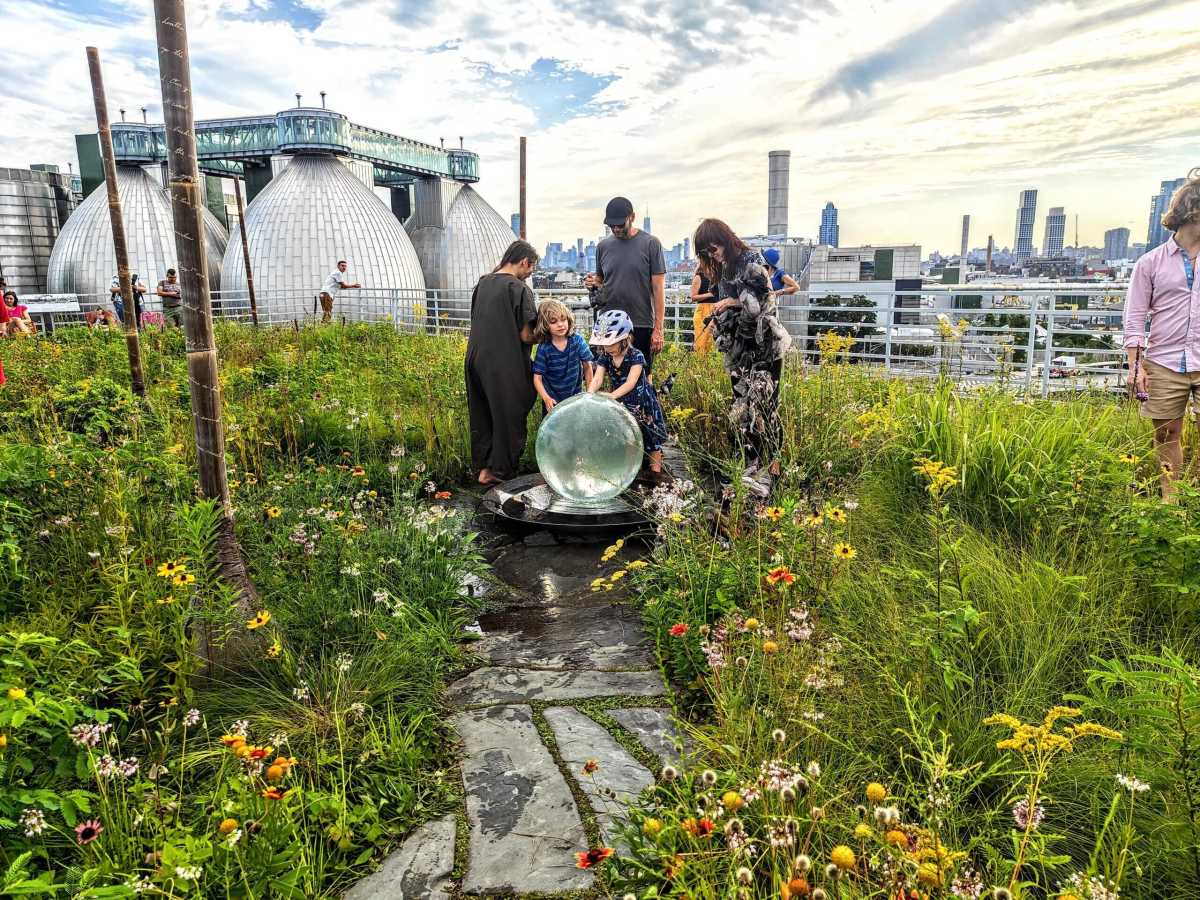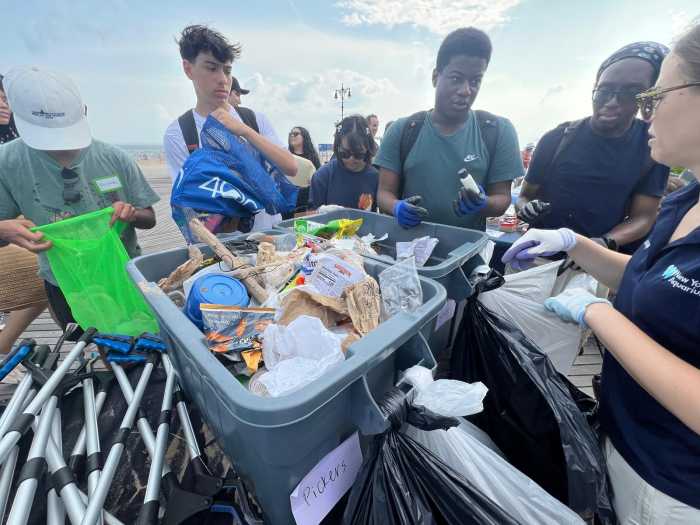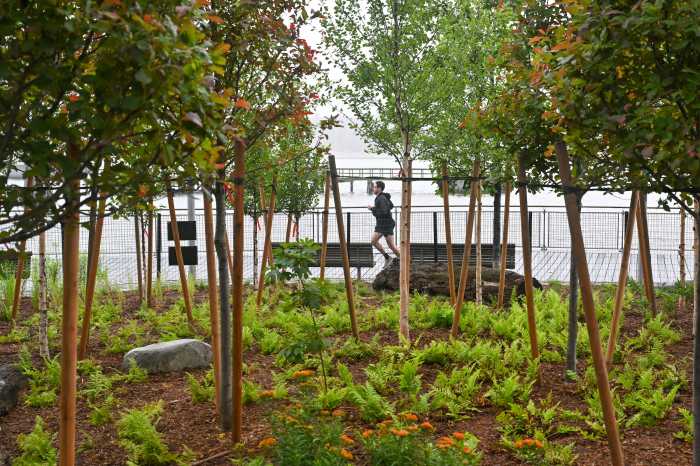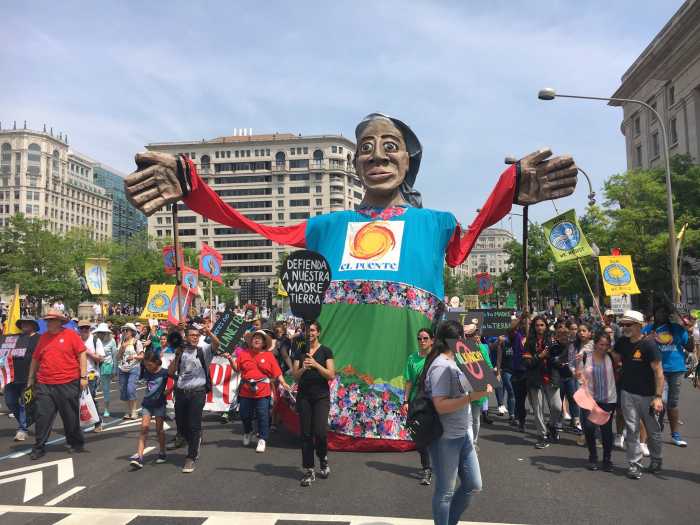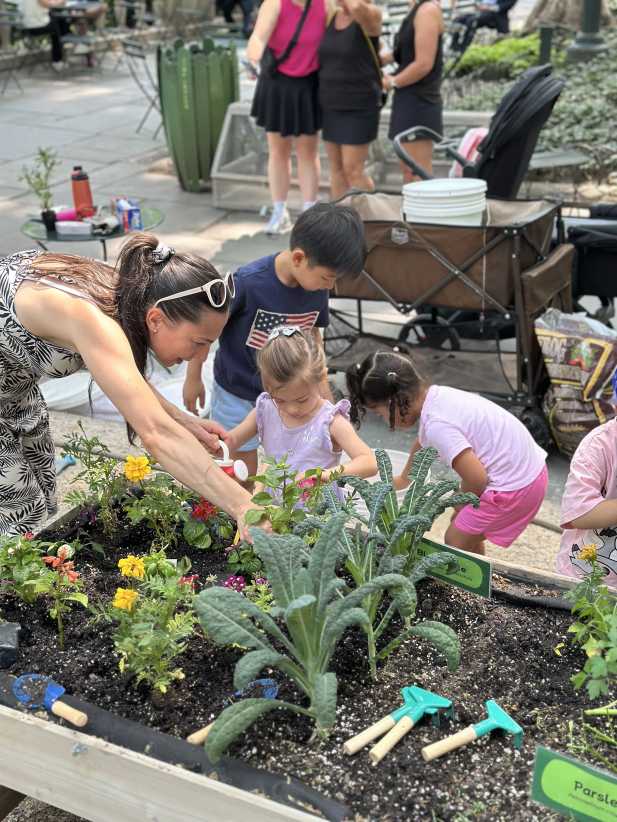Greenpointers are buzzing!
From the rooftop of the warehouse at 520 Kingsland Ave. next to the Newton Creek Wastewater Treatment Plant, the industrial sounds of pipes and gases coming out of chimneys from all around get out drowned by the buzzing of hundreds of pollinators that take at break among wildflowers and tall grass.
The 7th annual Kingsland Wildflowers Festival welcomed large crowds to explore the 24,000 square-foot green roof in the middle of a sea of industrial plants on Sunday. Kingsland Wildflowers’ green roof is home to an abundance of native plants and a pit stop for insects in a sea of metal and concrete. The lush rooftop overlooks the Manhattan skyline and the heavy industrial zones of Greenpoint — including the Newtown Creek federal Superfund site.
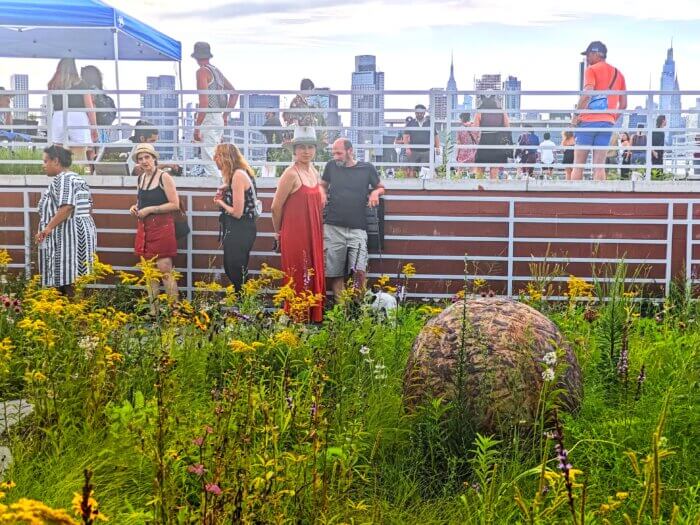
Both the views and plantings create an opportunity for conversation and education about New York City’s green infrastructure initiatives, environmental policy and the role of locals in the growing climate crisis. Scientists and advocates attended the festival to provide information on how New Yorkers can do their part to ease the city’s environmental footprint with projects as ambitious as green rooftops and as simple as choosing native plants and pollinator-friendly flowers for home window boxes.
“Imagine having to walk through the entire city, from the Bronx to Staten Island without catching a break, without finding food,” said Green Roof Researchers Alliance volunteer Dustin Patterson. “No living being should be through such exhaustion. It’s so easy and so beneficial for us to provide these types of spaces. Being out here even improves our mental health.”
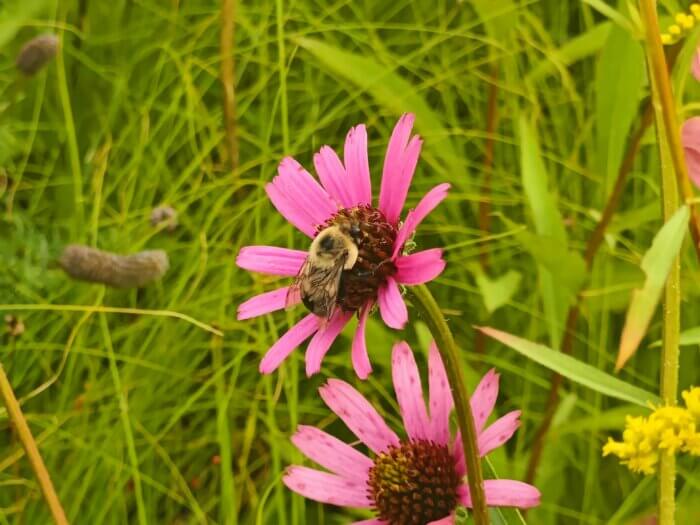
Some species thrive more in cities than in rural or suburban areas because of fewer pesticides. Insects are the vital pollinators and recyclers of ecosystems and the base of food webs everywhere.
In the U.S., the population of monarch butterflies fell by 90% in the last 20 years, a loss of 900 million individuals, while the bumblebee, which once lived in 28 states, dropped by 87% over the same period, according to the World Wildlife Organization. At plain sight, one can see wasps, bees, butterflies and birds at the green roof in north Brooklyn.
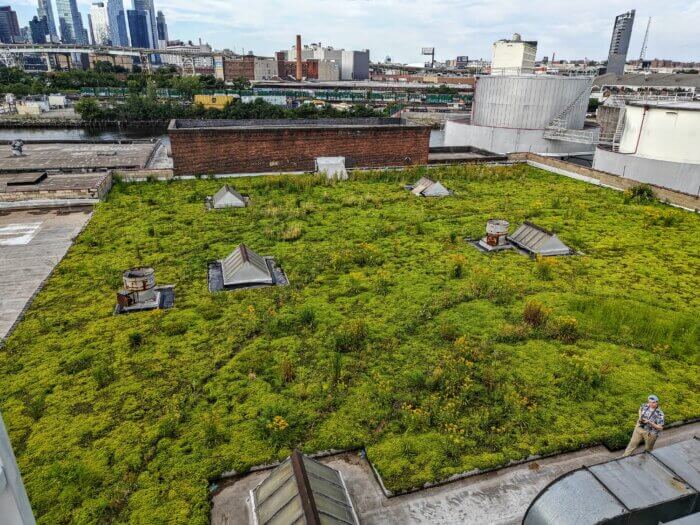
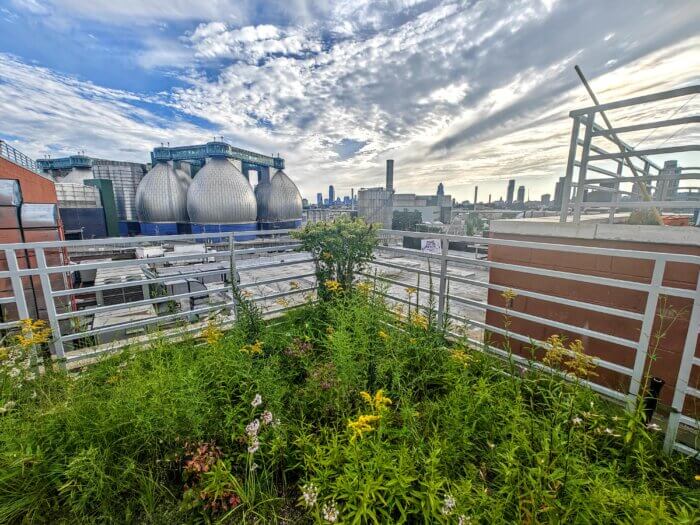
“Choosing native plants that are useful to pollinators, for roadsides, gardens and parks, goes a long way,” said Amaya Riis, a volunteer at the American Bird Conservancy.
There are 2.9 billion fewer birds in the US and Canada than there were 50 years ago, according to the organization.
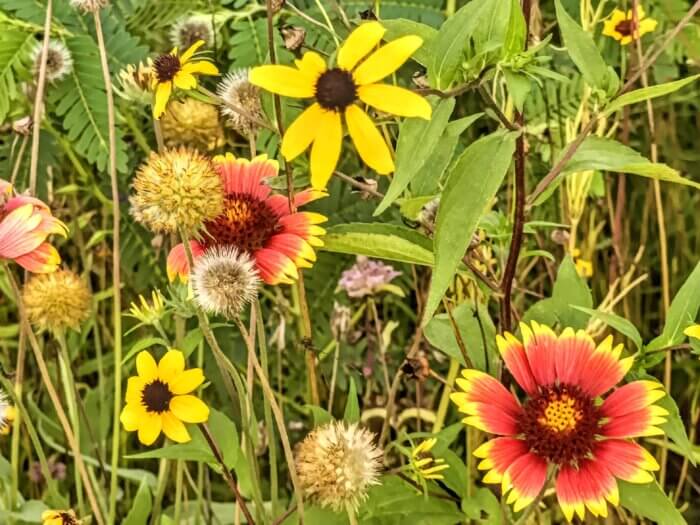
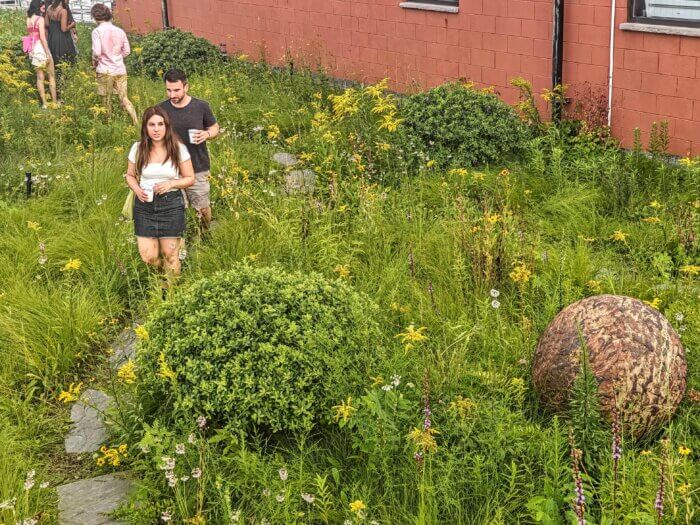
In 2019, the New York City Council passed the Climate Mobilization Act, a suite of measures to reduce greenhouse gases released from buildings which are responsible for almost three-quarters of all local emissions, and rising temperatures, back in 2019. The act includes a requirement for green roofs and solar panels on newly constructed buildings. However, the 730 green roofs that exist in NYC cover just 60 of the city’s 40,000 rooftop acres, according to the GRRA.
“It’s obvious that we are not doing enough to avoid this climate crisis to become an unrepairable catastrophe and whatever we are doing, we are doing too slowly,” said Maureen Geller of Alive Structures, the company that designed and installed the Kingsland Wildflowers roof.
North Brooklyn, particularly Williamsburg, has historically had some of the highest asthma rates in New York City. As a waste transfer hub, with the Brooklyn-Queens Expressway running through the heart of the neighborhood and with a large industrial business zone and two Superfund sites within a few miles of each other, the area has long battled air pollution.
Green roofs capture dust, heavy rains and give buildings an extra layer of insulation. As soil and greenery absorb more heat than concrete or cement, they ease urban heat island effects and improve air quality.
“Walking around this area is difficult to bear,” said Elise Rupert, a festival attendee. “Industrial neighborhoods are necessary to sustain this city, but after looking around for one minute, it’s obvious that this is the face of damage and enabling nature feels like the cure.”


